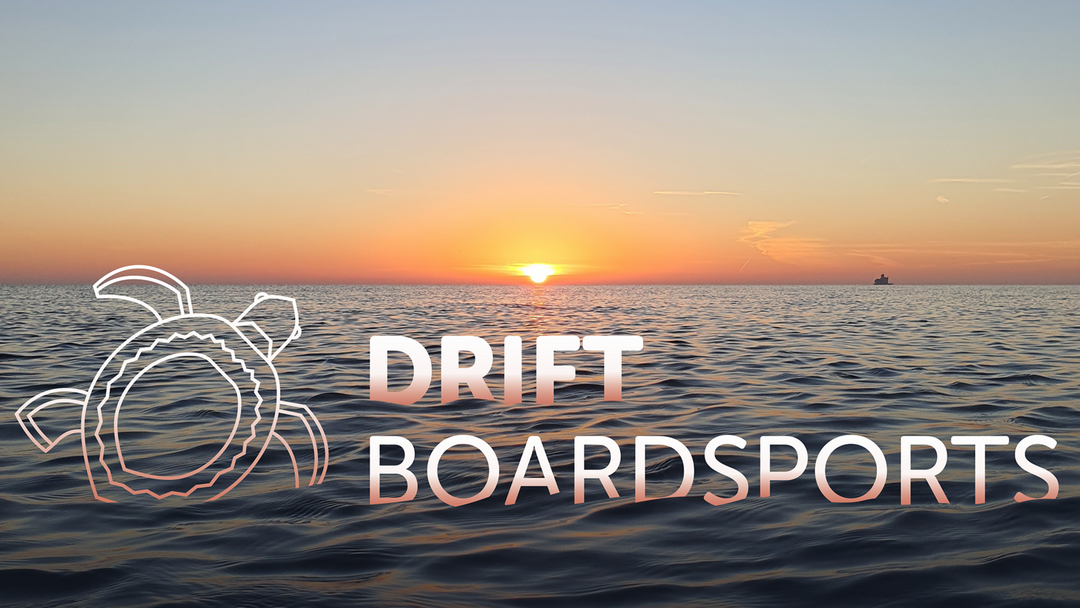?
There are various types of Stand-Up Paddleboards (SUPs) available, each designed for different activities and water conditions. Some popular types of SUPs include All-Around SUPs, Touring SUPs, Racing SUPs, Surf SUPs, and Inflatable SUPs. All-Around SUPs are versatile and suitable for a variety of conditions, while Touring SUPs are designed for longer trips. Racing SUPs are built for speed, Surf SUPs are perfect for riding waves, and Inflatable SUPs are convenient for travel and storage. Whether you're a beginner or an experienced paddler, there is a type of SUP to suit your needs.
Allround
If you're looking for a versatile paddleboarding experience, then Allround boards are the perfect choice for you. These boards are designed to cater to all experience levels, from beginners to advanced riders, and offer a more rounded shape with a wider body.
Allround boards are popular among paddleboarders because of their stability and manoeuvrability. These boards offer an incredibly stable ride that makes it easy for anyone to get started, even if they're a beginner. Whether you're paddling on flat water or small waves, Allround boards will help you maintain balance, even in choppy waters.
In addition to their stability, Allround boards are also highly manoeuvrable. These boards have a more rounded shape that allows them to turn quickly and easily, making them perfect for riders who love to explore new areas and tackle different challenges. The manoeuvrability of these boards also makes them a great choice
for riders who want to improve their skills and try out new tricks and techniques.
Allround boards come in a range of lengths and widths to cater to different preferences and skill levels. The most common lengths for Allround boards start at 9'6" and go all the way up to 11'2". The widths of these boards typically range from 31" to 34". Choosing the right size board for you depends on your weight, height, and skill level.
Performance Allround
Performance Allround Paddleboards represent a significant upgrade from their standard round-nosed counterparts, with amazing versatility in various paddling scenarios, particularly when it comes to extended distances, river-based environments, or choppy seas. Thanks to their pointed nose and square tail, these paddleboards offer an optimal blend of speed and stability, with their exceptional performance remaining intact even in the face of small waves.
This high-performance allround board has designed to ensure that paddlers seeking a versatile and efficient alternative to the all-round board can experience greater speed and performance while still retaining the board's stability and flexibility of use. The board's elongated shape and streamlined nose contribute significantly to its enhanced speed, while its width and square-shaped tail help maintain a sense of stability. If you're searching for a paddleboard that can do it all, and do it well, look no further than the Performance Allround Paddleboard. Sizes typically range from 11'2" - 11'6" in length and from 30" - 32" in width.
Touring
Touring paddle boards are designed for long-distance paddling and exploring, on lakes, rivers, and coastlines. These boards are typically longer and narrower than other types of paddle boards, which allows for increased speed, efficiency, and better straight-line performance (tracking).
They feature a pointed nose and a slightly tapered or square tail, which helps to cut through the water smoothly and maintain a straight course. Touring paddle boards usually have a displacement hull, which means they displace water as they move through it, creating less resistance and making it easier to paddle longer distances with less effort.
Additionally, touring paddle boards often have extra features, such as bungee cords for storing gear, multiple tie-down points, and a larger deck pad for more comfortable and stable footing. Touring SUPs vary in size from 11‘6“ to 13‘6“ in length and 28.5“ to 35“ in width.
Race
A race paddle board is designed for speed and performance in competitive paddle boarding events, they are also preferred by some riders who use them for fitness training. These boards are typically long and narrow, with a pointed nose and a flat or slightly concave bottom.
They have a low profile, which allows for reduced drag and increased speed, composite (hard) race paddleboards are usually made from lightweight materials such as carbon fibre or Kevlar to further enhance their performance.
The narrow width of race paddle boards requires good balance and skill to maintain stability but allows for maximum manoeuvrability, for quick buoy turns, and speed. They can have a smaller deck pad to minimise weight and a minimal number of tie-downs as carrying a lot of kit isn’t usually a priority and can slow the board down.
Overall, race paddle boards are designed to be fast, agile, and efficient to give competitive paddlers the edge they need to win races. Race Paddle Boards are usually either 12‘6“ or 14‘0“ in length and vary in width from 19“ to 29“.
Surf
Surf stand-up paddleboards are designed specifically for catching and riding waves. These paddle boards typically feature a more elongated and pointed nose with varying tail shapes.
They are typically less stable, slower and harder to paddle in a straight line than other types of SUP but Surf SUPs are designed to allow the rider to manoeuvre more easily on and along waves. The rocker, or curve, of the board tends to be more pronounced than in allround and touring SUPs, creating an extremely agile board that can turn more quickly. The rails of a surf SUP tend to be thinner and more tapered than in other SUP designs, allowing the rider to carve more easily and engage better with the wave face. Surf SUP boards may
also feature a more streamlined shape, with less volume and a narrower width, allowing the rider to generate more speed to keep them in the perfect position on the wave face.
Additionally, surf SUP boards may have specialised fin setups, such as a thruster or quad configuration, for increased stability and control. With the right design and features, a surf SUP can provide an exciting and versatile option for riders looking to catch waves in a variety of conditions.
WindSUP
A WindSUP paddle board is designed for both stand-up paddle boarding and windsurfing activities. These boards are usually wider and more stable than traditional windsurfing boards, which makes them easier to use for beginners or intermediate riders.
They have a centre fin which provides better upwind sailing ability and stability when windsurfing. Additionally, WindSUP paddle boards often feature a mast insert and sometimes footstrap attachments, which allows windsurfers to attach a sail and control the board's direction and speed. The shape of WindSUP paddle boards can vary, but they are generally longer than allround paddle boards and shorter than touring paddle boards. They also have a slight rocker to the bottom of the board, which helps with manoeuvrability when windsurfing.
Overall, WindSUP paddle boards offer a versatile option for riders who want to enjoy both stand-up paddle boarding and windsurfing activities, providing a fun and accessible way to experience both sports.
White Water
The design of a white water stand-up paddleboard is specifically tailored to the challenges of navigating fast-moving and turbulent water. The shape of a white water SUP board typically features a shorter length than traditional flatwater boards, which increases manoeuvrability and control in rough water conditions.
The board may also have a pronounced rocker, which is the curve from nose to tail that allows the board to easily ride over waves and rapids. The rails of a white water SUP board tend to be thicker and more durable to withstand the bumps and impacts of rough water, and the board may have additional reinforcement in high-stress areas.
The shape and size of the board may also affect the rider's stance and paddling technique, with a wider tail providing more stability and a narrower tail allowing for more agility and responsiveness. Overall, the design of a white water SUP board is critical to ensuring the rider's safety and enjoyment while navigating challenging water conditions.
SUP Construction
Composite (Hard) SUP
Composite SUPs are a popular choice for intermediate and experienced paddlers who value high performance and durability in their stand-up paddleboards. This construction method involves using a combination of materials, including foam, fiberglass, and epoxy resin.
The process of building a composite SUP starts with shaping a foam core to the desired size and shape. The foam core is then wrapped in multiple layers of fiberglass cloth with each layer coated in epoxy resin. This creates a stiff, sturdy board that glides smoothly through the water. With proper maintenance composite SUPs are highly durable and can last for many years.
Composite SUPs are typically more expensive than Inflatable SUPs due to the high-quality materials used in their construction. They can also be slightly heavier and less portable than inflatable SUPs, making them more difficult to transport and store but are stiffer and do perform better on the water.
Inflatable SUP (iSUP)
An Inflatable SUP construction is a popular choice for those who prioritise portability and
convenience in their stand-up paddleboards. This type of SUP is created using high-grade PVC and drop-stitch technology to create a durable and rigid structure once inflated.
One of the biggest advantages of inflatable SUPs is their portability. They can be easily deflated and packed into a backpack or small bag, making them ideal for travel or storage in small spaces. Additionally, inflatable SUPs are typically less expensive than composite SUPs, making them a more accessible option for a lot of people.
However, inflatable SUPs may not offer the same level of performance as composite SUPs, as they tend to be
less rigid and can flex slightly under pressure. They may also be less durable than composite SUPs, as the PVC material can puncture or tear if not handled with care. Read our Care Guide
In summary, inflatable SUP construction is a great option for those who value portability and convenience in their paddleboard. While they may not offer the same level of performance as composite SUPs, they are more affordable and easier to transport, making them a popular choice for a lot paddlers and those with families.
SUP Dimensions And Their Importance
Width
The height of a rider can have an impact on the width of a stand-up paddleboard (SUP). Generally speaking, taller riders may require wider boards to provide adequate stability and balance. This is because taller individuals typically have a higher centre of gravity, which can make it more difficult to maintain stability on a narrower board. On the other hand, shorter riders may be able to get by with narrower boards since they have a lower centre of gravity and may find it easier to maintain balance. It's important to note that other factors, such as a rider's skill level and the conditions in which they will be paddling, can also play a role in determining the optimal board width. Ultimately, it's a good idea to consult with a knowledgeable SUP expert to help determine the right board width for your specific needs. Contact Us
Length
The length of a stand-up paddleboard (SUP) can have a significant impact on its speed in the water. Generally speaking, longer boards are faster than shorter boards because they have a longer waterline, which allows them to glide through the water with less resistance. Longer boards also tend to be more stable through chop, making it easier for riders to maintain their balance and paddle efficiently. However, longer boards can be more difficult to manoeuvre, especially in tight spaces or when making sharp turns. Shorter boards, on the other hand, may not be as fast as longer boards, but they are typically more manoeuvrable, which can be an advantage in certain situations. Ultimately, the right board length depends on a number of factors, including a rider's skill level, the type of paddling they will be doing, and their personal preferences. It's important to consult with a knowledgeable SUP expert to determine the optimal board length for your specific needs. Check Out Our iSUP Selector
Thickness
The weight of a rider can impact the thickness of a stand-up paddleboard (SUP). Generally speaking, heavier riders may require thicker boards to provide sufficient buoyancy and stability in the water. This is because a thicker board can displace more water and support more weight, making it easier for heavier riders to stay afloat and maintain balance. Conversely, lighter riders may be able to use thinner boards since they require less buoyancy and support. However, it's important to note that other factors, such as a rider's skill level and the conditions in which they will be paddling, can also play a role in determining the optimal board thickness. It's always a good idea to consult with a knowledgeable SUP expert to determine the right board thickness for your specific needs. Contact Us
Volume
The volume of a stand-up paddleboard can be a crucial factor to consider when choosing the right board for your needs. Board volume is measured in litres and is determined by the board's length, width, and thickness. A board with a higher volume will be more buoyant and able to support more weight, while a lower volume board will be less buoyant and suitable for smaller riders. Board volume also affects stability and manoeuvrability in the water. Boards with higher volume tend to be more stable but can be slower and less manoeuvrable than boards with lower volume. On the other hand, boards with lower volume tend to be faster and more responsive but may not be as stable for beginners or larger riders. Ultimately, the right board volume depends on several factors, including a rider's weight, skill level, any kit that may need to be carried
and the conditions in which they will be paddling. It's important to consult with a knowledgeable SUP expert to determine the optimal board volume for your specific needs.
Pressure
The pressure of an inflatable stand-up paddleboard (iSUP) is an important factor to consider when using and storing the board. Most iSUPs require a minimum air pressure of around 15 psi with better brands having stronger construction methods and being able to take up to 26 psi (always check the recommended pressure for your board). Overinflating or underinflating the board can lead to issues with stability in the water. It can also put unnecessary strain on the seams and materials of the board, leading to potential damage or failure. It's important to use a pump with a pressure gauge to ensure that the board is inflated to the correct pressure, and to check the pressure before each use. When storing the board, it's recommended to deflate it to around 50% of its full pressure to prevent damage to the seams and materials over time. With proper pressure management, an iSUP can provide a durable and versatile option for paddling in a variety of water conditions.
Environmental Awareness
Stand-up paddleboarding has become a popular water activity in recent years, but it is important to consider the environmental impact of this sport. Like any human activity, SUP can have both positive and negative effects on the environment.
On the positive side, SUP can provide a unique way to connect with nature and appreciate the beauty of our waterways. It can also be a way to promote conservation efforts by raising awareness about environmental issues and encouraging people to protect our water resources.
However, there are also negative environmental impacts associated with SUP. One of the biggest concerns is the potential for litter and pollution. Paddleboarders can inadvertently drop items into the water or leave trash behind on shorelines, which can harm marine life and disrupt ecosystems. Additionally, the production and transportation of SUPs can have a significant carbon footprint, contributing to climate change.
It is also worth pointing out that inflatable paddleboards are made using PVC so it is always a good idea to choose brands which use quality materials, which last longer, and have minimised or eliminated single use plastics in their packaging.
To mitigate the negative impacts of SUP, it is important for paddlers to practice responsible and sustainable behaviour. This includes properly disposing of waste, using eco-friendly products, and minimising the use of single-use plastics. Paddlers can also participate in clean-up efforts and support conservation initiatives to protect our waterways.
While SUP can have positive benefits for the environment, it is important to be aware of and address the negative impacts as well. By practicing responsible and sustainable behaviour, we can ensure that we can continue to enjoy this sport while also protecting our planet's precious natural resources.
SUP Packages
Stand-up paddleboarding is a fun and exciting way to explore our waterways, and purchasing a SUP package can make it even easier to get started. But what exactly is included in a typical SUP package?
Most SUP packages come with a few key items: the paddleboard itself, a paddle, a fin, and a leash. The
paddleboard is the main component and comes in either composite or inflatable construction. Composite SUPs are made from hard materials such as fiberglass or carbon fibre, while inflatable SUPs are made from durable PVC and can be easily inflated and deflated.
The paddle is an essential component of any SUP package, and it is important to choose one that is the
right length and weight for your needs. Paddles can be made from materials like aluminium, fiberglass, or carbon fibre and come in a variety of shapes and sizes.
The leash is another important safety component of a SUP package, as it keeps the paddler connected to the board in case of a fall. Leashes come in different lengths and types, with some designed specifically for use in calm waters and others for more challenging conditions.
Other items that may be included in a SUP package can include a carrying bag, pump (for inflatable SUPs), and repair kit. Some packages may also include additional accessories.
SUP packages typically include the paddleboard, paddle, and leash as the main components, but may also include additional items to enhance the paddling experience. When selecting a SUP package, it is important to choose one that meets your individual needs and preferences, whether that be for ease of transportation, durability, or additional features.
Lessons
Getting a stand-up paddleboard (SUP) lesson is an essential step for anyone who is new to the sport or looking to improve their skills. Paddleboarding may seem simple, but it involves a range of techniques and safety considerations that are best learned from a qualified instructor. A lesson can provide guidance on proper paddling technique, board control, and safety practices, as well as information on how to read water conditions and weather patterns.
Additionally, a lesson can help prevent common mistakes and injuries, such as falling off the board or getting caught in currents. By learning from a qualified instructor, you can also gain confidence and get the most out of your paddling experience. Whether you are looking to paddle for fitness, relaxation, or adventure, a SUP lesson is a valuable investment that can enhance your skills and enjoyment of the sport.
Find your perfect board
iSUP Selector
At Drift Boardsports we have designed our iSUP Selector to narrow down the wide choice of paddleboards into a tailored collection for you.






